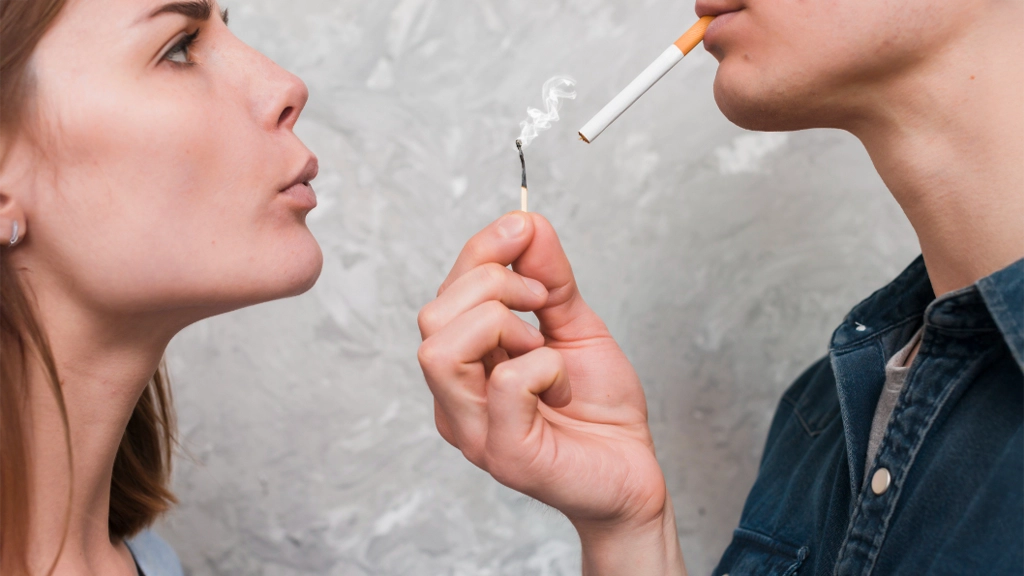Public Health England and the Royal College of Physicians confirm that vaping is 20 times less harmful than smoking, yet many governments continue to push restrictive policies that equate nicotine use with tobacco.
He referred to a study by “one of the grand masters of nicotine research,” researcher Ken Warner of the University of Michigan, who highlights this issue in a study titled “Kids no longer smoke: why aren’t we celebrating?” Warner notes that youth smoking has dropped to nearly zero, with Canadian statistics similarly showing that less than one percent of 15- to 19-year-olds smoke daily, compared to 25% in the 1990s.
Irvine highlighted that while smoking rates had been gradually decreasing for decades, the introduction of Juul and Vuse in 2018, accelerated the decline, particularly among young people. Public Health England and the Royal College of Physicians confirm that vaping is 20 times less harmful than smoking, yet many governments continue to push restrictive policies that equate nicotine use with tobacco.
The expert underlined that instead of acknowledging the role of vaping in reducing smoking, sadly, health authorities have been focused on exaggerating risks. Some keep advocating banning flavoured vapes, despite the undeniable evidence indicating that flavours help adults quit smoking. Others push for regulations such as age restrictions, higher than those for alcohol or cannabis, bans on advertising harm reduction benefits, and limitations on sales near schools—while cigarettes remain widely available.
Consistent patterns of “tobacco” use
A clear example of this comes from Alaska. A new report from Alaska’s Tobacco Prevention and Control Program reveals contrasting trends in tobacco use among adults and youth in the state. The report bemoans the fact that while cigarette smoking has declined significantly over the decades, overall adult tobacco use has remained stable at 25% since 2014, and vaping has become increasingly common among young people.
Among youth, cigarette smoking has become increasingly rare, decreasing from 37% in 1995 to just 8% in 2019. However, vaping has surged, with youth usage of electronic cigarettes increasing from 18% in 2015 to 26% in 2019. Nearly half of Alaska high school students (46%) reported having tried vaping at least once, up from 36% in 2015.
Cigarette consumption has seen a marked decline over the decades, dropping from 128.6 packs per person in 1996 to 39.4 packs per person in 2021. The report also highlights disparities between Alaska Natives and non-Natives. Tobacco use among Alaska Natives dropped from 50% in 2014 to 43% in 2021, narrowing the gap with non-Native adults, whose usage rate has held steady at 21%.
Meanwhile in response to these data, the Alaska Legislature has been considering Senate Bill 89, introduced by Senate President Gary Stevens. Originally, the bill sought to impose Alaska’s first statewide tax on electronic cigarette products and raise the minimum purchase age from 19 to 21. However, the tax provision was removed in the state House.
Lowering nicotine – Is it effective?
Another example of how authorities have been tackling the issue of “tobacco use” the wrong way round, is how upon nearing its conclusion the Biden administration proposed a cap on nicotine levels in cigarettes. The FDA first introduced this idea in 2017 under then-Commissioner Dr. Scott Gottlieb, intending to shift smokers toward less harmful noncombustible alternatives.
Advocates argue that reducing nicotine could save millions of lives, particularly by preventing youth addiction. A 2018 FDA study projected that nicotine caps could prevent 16 million new smokers by 2060 and 33 million by 2100. However, this last-minute effort by Biden, was considered by many a political move rather than one grounded in improving public health.
Tobacco harm reduction experts have long argued that nicotine, a stimulant no more harmful than coffee, is the least harmful compound found in cigarettes. In fact, on the contrary, there are countless studies and ongoing research looking into the medicinal benefits of nicotine.
The bigger picture
This article was originally published by a www.vapingpost.com . Read the Original article here. .

